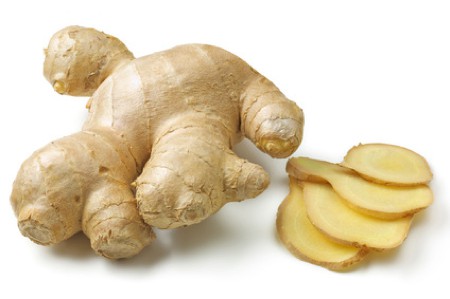By Nadia Marshall
What is Ginger?
Ginger (Zingerber Officinale), in the family Zingiberaceae, is a flowering plant whose rhizome; a fancy name for root - has been widely used for thousands of years as both a hot, fragrant, 'zingy' culinary spice (see what I did there?) and as a wonderful herbal medicine. Ginger is thought to have originated from the tropical rainforests of the Indian subcontinent and is used widely in a variety of cultural cusines. Interestingly, turmeric and cardamom are in the same family of plants.
What are its qualities?
Both fresh and dry ginger root are used regularly in Ayurveda but they have slightly different qualities and effects on the body...
Rasa: Pungent, Sweet
Virya: Warming (Fresh is warming, dry is hot)
Vipaka: Sweet
Qualities: Fresh is unctous and heavy; dry is sry, light and penetrating
Actions on the doshas: Decreases Vata and Kapha, can increase Pitta in excess, especially dry ginger.
Action on the mind: Sattvic
What are its medicinal qualities?
From an Ayurvedic perspective, ginger is a superfood, particularly for digestion, respiration and the joints. It is believed to destroy ama or toxins, enkindle the digestive fire, improve the secretion of digestive enzymes, prevents nausea and stop hiccups. It also improves peripheral circulation and warms up the body, reducing feelings of cold and pain - perfect for Vata or Kapha folk in cold climates. It can even be helpful in congestive-type cardiac disorders when used at a high dosage. Ginger clears phlegm in the lungs, alleviating coughs, colds and breathing difficulties. Despite its warming quality, it also reduces inflammation by inhibiting the activity of prostoglandins so is used in many traditional forumlations to treat arthritis. For the same reason, hot, fresh ginger tea is also great medicine for menstrual cramps. Ginger also has a rejuvenating effect on the body/mind and is considered Sattvic, helping to promote a calm, peaceful mind (1). In Ayurveda, ginger is used in a wide variety or formulations, in home remedies as a pulp or juice and even in herbal boluses for treatments like Pindaswed.
The Western viewpoint/The Science so far...
From a vitamin and mineral perspective, ginger is high in Manganese, an important mineral critical to bone formation, metabolic activity, blood sugar control and known to help reduce inflammation, alleviate PMS and help protect the body against free-radical damage.
The phenolic compounds that give ginger its unique flavour and fragrance are collectively know as 6-gingerol which is known to have anti-cancer, anti-inflammatory and anti-oxidant effects (2). Ginger has been shown to reduce nausea post-surgery and in cancer patients on chemo (3 & 4), to reduce the day-to-day progression of muscle pain (5) and to reduce the symptoms of osteoarthritis (6). In a relatively small study it was also shown to reduce fasting blood sugar and improve major risk factors for heart disease (7). It has also been shown to reduce cholesterol or blood lipid levels (8), to ease chronic indigestion, also referred to as dyspepsia (9) and to reduce period pain as effectively as ibuprofen! (10).
How do you eat it?
An easy way to take ginger is as a tea - 1/4 tsp of ginger in a cup of hot water with a squeeze of lemon and a dash of honey in the mornings before breakfast is a lovely way to enjoy the compounded benefits of ginger. Like turmeric, we have ginger with almost every meal, apart from sweet porridges. It is the key ingredient in our kicharees, daals, vegetable subjis, mung daal pancakes, soups, casseroles and chais. If you avoid eating chilli (as most followers of Ayurveda do), then ginger is your substitute... your main source of ZING. Yep, I couldn't resist saying it again.
Check out the vido below for an awesome, crazy-simple chai recipe with one feature ingredient... GINGER (aka 'Sunthi' in Hindi).
Why do I love it?
Ginger is a game-changer. It makes everything a little tastier and easier to digest and fills your belly with a warmth... it is like a warm hug from the inside out. If, like me, you've ever suffered from bloating, gas or vata-type indigestion then you should welcome ginger into your life with open arms! Say good-bye to tummy aches and embarrasing belching and hello to easeful digestion everyday, every meal. Thank you ginger, thank you for all you give us!!
Should anyone avoid eating it?
Nearly everyone will benefit from eating ginger every single day. However, if you are pregnant, keep your dose relatively low, below 2g (even though it will help enormously with morning sickness). People with high blood pressure, peptic ulcers, reflux and skin diseases with inflammation should also keep their dose relatively low and those with gallstones may wish to avoid it due to its cholagogue or bile-purging effect.
Where do you get it from?
You can get fresh ginger everywhere... the fruit and veggie shop, the farmers market and even the supermarket. Don't buy ginger in a jar. Treat yourself and your family and buy the fresh root. Also grab yourself a small sharp knife and a microplane grater so you can peel and grate it with ease. As for the dry stuff, buy organic. We buy our organic dry ground ginger in 1kg bags from www.herbsupplies.com.au.
Tell me about your experience with ginger... and why you love it! xx
Love
Nadia xx
(1) "Ayurvedic Medicine: The Principles of Traditional Practice" by Sebastian Pole
(2) http://www.ncbi.nlm.nih.gov/pubmed/25230520
(3) http://www.ncbi.nlm.nih.gov/pubmed/16389016
(4) http://www.ncbi.nlm.nih.gov/pubmed/20842754
(5) http://www.ncbi.nlm.nih.gov/pubmed/21031618
(6) http://www.ncbi.nlm.nih.gov/pubmed/11710709
(7) http://www.ncbi.nlm.nih.gov/pmc/articles/PMC4277626/
(8) http://www.ncbi.nlm.nih.gov/pubmed/18813412
(9) http://www.ncbi.nlm.nih.gov/pmc/articles/PMC3016669/
(10) http://www.ncbi.nlm.nih.gov/pubmed/19216660
Ginger: The Ayurvedic Perspective

AYURVEDIC TERMINOLOGY
Agni - the digestive fire.
Ama or Aama - undigested food waste, toxins.
Ojas- the foundation of our immune system and longevity.
Dhatus - the tissues of the body.
Srotas - the channels of the body.
Vata - the air/ether
intelligence in the body.
Pitta- the fire/water
intelligence in the body.
Kapha- the water/earth intelligence in the body.
Sattva- the quality of purity, intelligence, peace and love.
Rajas- the quality of
turbulence and activity.
Tamas- the quality of
dullness, darkness and inertia.
Rasa - the taste of a food (Sweet, Sour, Salty, Pungent, Bitter, Astringent)
Virya - second level of digestion (either Heating or Cooling)
Vipaka - third level of digestion, the deep taste of a food (can be Sweet, Sour or Pungent)
Prabhav - the 'special effect' of a food or herb/spice
Rasa - also the name for plasma tissue
Rakta - blood tissue
Mamsa - muscle tissue
Meda - fat tissue
Asthi - bone tissue
Majja - nerve & bone marrow tissue
Shukra - sexual reproductive tissue


